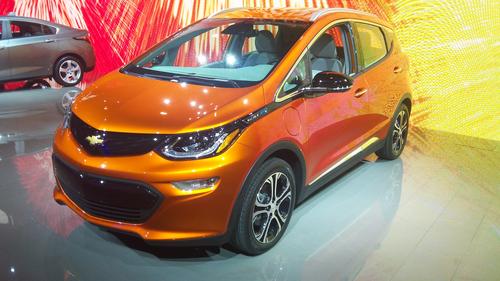Will EPA Relax the 54.5 MPG Mandate?
A recently released government report has raised the hopes of automakers looking for a break on future fuel economy regulations, despite the warnings of an Environmental Protection Agency official who said the agency is unlikely to back down on its goal of 54.5 mpg by 2025.
August 12, 2016
A recently released government report has raised the hopes of automakers looking for a break on future fuel economy regulations, despite the warnings of an Environmental Protection Agency (EPA) official who said the agency is unlikely to back down on its goal of 54.5 mpg by 2025.
Chris Grundler, director of the EPA’s Office of Transportation and Air Quality, told auto executives at a recent Center for Automotive Research (CAR) management event in Traverse City, Mich., that the agency has no intention of rescinding its current corporate average fuel economy (CAFE) mandate. “Chris vehemently said, ‘No, we’re still going for 54.5,’” David Cole, chairman emeritus for CAR, told Design News. “He said, ‘That’s our goal, and we’re going for it, even with this recent report.’”
The report -- jointly released in July by the EPA, the National Highway Traffic Safety Institute (NHTSA), and the California Air Resources Board (CARB) -- acknowledged that low gas prices have precipitated a strong consumer shift from cars to light-duty trucks and SUVs. That shift makes it more difficult for the industry to meet the government’s 2025 gas mileage target, automakers say.
Automakers hope electrified vehicles like the Chevy Bolt will help them reach the EPA’s 54.5 mpg target.
(Source: Design News)
"They didn’t accurately judge the mix of vehicles,” noted Chris Robinson, research associate for Lux Research. “The government was thinking it would be 65% cars and 35% pick-ups and SUVs. They basically had it backwards.”
Since 2012, government regulations have called for automakers to reach an average fuel efficiency rating of 54.5 mpg by 2025. Given the results of the new report, however, automotive engineers now question whether that will be possible.
Some industry analysts believe the EPA will rethink the regulations. “We wouldn’t be surprised if they relaxed it,” Robinson said. “They could go to a lower target, but if they do, they will increase the fines.” The EPA currently levies fines for automakers who fall short of their corporate average fuel economy targets, Robinson said.
To meet the regulations, automakers have spent billions of dollars developing technologies to cut gasoline consumption. Electric powertrains and start-stop engine systems are considered critical, as are turbochargers, direct injection fuel delivery, cylinder deactivation, variable valve timing, and a multitude of advanced materials that could significantly cut the weight of vehicles.
Automakers argue that the cost of implementing such technologies will rise sharply as they get closer to the fuel efficiency target. Some say that the cost could reach more than $5,000 per vehicle. Government agencies have reportedly argued that the cost figure should be no more than $1,000 per vehicle. Lux Research has placed an estimate of $2,000.
READ MORE ABOUT CAFÉ MANDATES:
Cole contends that the automaker estimate is probably the most realistic. “The people who do these things generally know best,” he said. “They know the tooling costs and the component costs. They have to live with it.”
In the past, automotive executives have expressed fears that a significant rise in vehicle cost will cause consumers to defer the purchase of new cars. That possibility grows greater when the benefit to consumers diminishes. “If you have a truck that gets 10 mpg and you take it to 20, then the customer gets a big fuel-cost benefit,” Cole said. “But if you take it from 35 to 40 mpg, then the customer’s fuel savings grow smaller and smaller. And it may not be enough to offset the cost of the new fuel-saving technology.”
Grundler of the EPA, however, told auto executives that the stakes are too big to ignore. He said that if greenhouse gas emissions are not reduced 80% by 2050, dangerous climate changes will occur, Automotive News reported.
Analysts say fuel prices will be the key to the EPA’s conclusion, which is expected some time in 2018. As fuel prices go, they say, so go the buying decisions of the American consumer.
"Ultimately, no one can control the type of vehicles that consumers choose,” Robinson told us. “The government can’t do it, and neither can the automakers.”
Senior technical editor Chuck Murray has been writing about technology for 32 years. He joined Design News in 1987, and has covered electronics, automation, fluid power, and autos.
About the Author(s)
You May Also Like




